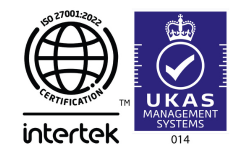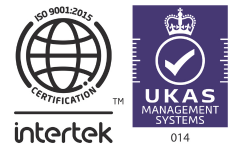The Full Process of Changing Payroll Providers
Switching payroll providers can seem like a complex and intimidating process. Transferring sensitive employee data, ensuring compliance with HMRC, and adapting to new software all require careful planning. However, with the right guidance and structured approach, businesses can navigate this transition smoothly while reaping the benefits of modern, cloud-based payroll systems. This guide outlines the key steps, answers common questions, and explains how HMRC supports the process to ensure a seamless switch.
Why Change Payroll Providers?
There are many reasons why businesses decide to change payroll providers. The decision often stems from dissatisfaction with the current system, such as outdated software, poor customer support, or lack of necessary features. For example, businesses may seek a provider offering enhanced automation tools, real-time updates, or better integration with HR systems to improve operational efficiency. Other reasons include cost-saving opportunities, improved scalability for growing businesses, and the desire for more robust data security measures.
Switching providers is a strategic decision designed to improve payroll management, ensure compliance, and streamline administrative tasks. To minimise disruption, it’s essential to carefully assess your business needs and choose a provider that aligns with your goals.
 The Process of Changing Payroll Providers
The Process of Changing Payroll Providers
Changing payroll providers requires detailed planning and execution to ensure accuracy and compliance. Below is a step-by-step guide to help businesses navigate the process.
1. Evaluate and Select a New Provider
The first step involves researching potential payroll providers to identify one that meets your specific business requirements. Businesses should look for providers offering user-friendly software, secure data handling, compliance support, and features such as real-time reporting and integration with existing HR and accounting systems. PayEscape, for instance, provides cloud-based payroll solutions with integrated HR and time-tracking tools, ensuring seamless data management.
It’s also important to assess customer reviews, request demonstrations, and confirm whether the provider offers support during the transition process. Taking time to evaluate providers ensures you select a system that aligns with your business objectives.
2. Plan the Transition Timeline
Timing is critical when switching payroll providers. Many businesses prefer to make the change at the start of a new financial year to maintain continuity in payroll records. This approach avoids the need to transfer mid-year data, which can complicate the process. However, if a mid-year switch is necessary, businesses must carefully coordinate to ensure all year-to-date data is transferred accurately.
A detailed transition plan should include a timeline, a checklist of tasks, and designated team members responsible for overseeing the process. Regular updates to stakeholders ensure the transition remains on track.
3. Notify Stakeholders and Prepare Data
Once you’ve selected a new provider, it’s essential to inform key stakeholders about the decision. Notify your current payroll provider and review the terms of your contract, including any notice periods or cancellation fees. It’s also crucial to communicate with employees, reassuring them that their payroll information will remain secure and that the transition will not affect their payments.
Preparing data for transfer involves exporting accurate and up-to-date payroll records. This includes employee names, contact details, tax codes, National Insurance numbers, and information on salaries, deductions, benefits, and pensions.
4. Export and Import Data
The current payroll provider will assist in exporting employee data. Most cloud-based payroll systems support the bulk upload of data through CSV files or similar formats. Before importing data into the new system, it’s essential to double-check records for accuracy. Any discrepancies in tax codes or payment history should be resolved before the data is uploaded to ensure compliance with HMRC requirements. Once the data is imported, the new provider may run initial checks or tests to confirm the accuracy of the records.
5. Test the New Payroll System
To ensure the new payroll system functions correctly, it’s advisable to run a parallel payroll for one or two cycles. This process involves calculating payroll on both the old and new systems simultaneously. Comparing the results allows businesses to identify any discrepancies or errors before fully transitioning to the new system. Testing also provides an opportunity for staff to familiarise themselves with the new software and identify any additional training requirements.
6. Transition to the New Provider
After successful testing, the new payroll provider can take over. The final payroll run with the old provider should include a closing report submitted to HMRC. The new provider will then handle subsequent payroll submissions, ensuring compliance with Real-Time Information (RTI) reporting requirements.
HMRC’s Role in Changing Payroll Providers
HMRC plays a vital role in ensuring that businesses remain compliant during the transition to a new payroll provider. The steps below outline how HMRC supports this process.
1. Real-Time Information (RTI) Reporting
When switching providers, the new payroll system must continue to report RTI to HMRC. RTI submissions include detailed information about employees’ pay, tax deductions, and National Insurance contributions.The new provider takes over these submissions, ensuring that HMRC records remain accurate. Any errors in RTI reporting during the transition period should be corrected immediately to avoid penalties.
2. Closing the Old Payroll Scheme
Your previous provider is responsible for submitting a final Full Payment Submission (FPS) and an Employer Payment Summary (EPS) to HMRC. These reports close the old payroll scheme and prevent duplicate records. The FPS includes details of employees’ pay, tax, and NI contributions for the final payroll run, while the EPS accounts for adjustments such as statutory payments or deductions.
3. Tax Code Accuracy
HMRC ensures that employees’ tax codes remain accurate during the transition. Any discrepancies identified during the transfer process should be resolved with HMRC to ensure employees are not over- or under-taxed.
Cloud-Based Payroll Software
Cloud-based payroll software operates by utilising cloud computing technology.
Managed Payroll Services
Opt for a fully managed payroll service by outsourcing the entire payroll process to PayEscape
Integrated HR and Payroll
PayEscape’s integrated HR and payroll software combines powerful HR functionality with robust payroll capabilities.
Need help to understand what solution is best for your business?
Speak with our expert team today on 028 2764 1060
Will employees notice the change in payroll providers?
If the transition is managed effectively, employees should not notice any significant changes. They may experience improved access to payslips or benefits if the new provider offers enhanced features, but their payment schedule and amounts should remain unaffected.
What happens to historical payroll data?
Historical payroll data is exported from the old provider and imported into the new system. It’s essential to ensure this data is accurately transferred to maintain compliance with HMRC reporting requirements and to provide employees with access to their payment history.
Can I switch providers mid-year?
Yes, businesses can switch payroll providers mid-year. However, this requires careful planning to ensure that all year-to-date data, including tax and NI contributions, is accurately transferred. Switching at the start of the financial year is often simpler as it avoids the need for additional adjustments.
How is data security maintained during the transfer?
Reputable cloud-based payroll providers use encryption and secure transfer protocols to protect sensitive data during the migration process. Before proceeding, businesses should confirm that the new provider adheres to stringent data security standards.
Who is responsible for errors during the transition?
While the new payroll provider assists with data migration, the responsibility for ensuring the accuracy of the information lies with the business. Double-checking records and resolving discrepancies before submitting them is essential.













Benefits of Cloud-Based Payroll Software
Switching to a modern, cloud-based payroll system offers several advantages. These systems enable businesses to manage payroll from anywhere with an internet connection, improving flexibility and efficiency.
Real-time updates ensure compliance with HMRC regulations, while integration with HR and time-tracking systems reduces manual data entry. Employees also benefit from self-service portals, where they can access payslips, update personal information, and manage leave requests. In addition, cloud-based payroll systems enhance data security by using advanced encryption methods and secure access controls. This protects sensitive employee information from unauthorised access or breaches.
How PayEscape Can Help
Our software integrates payroll, HR, and time-tracking tools, providing a seamless solution for businesses of all sizes. We handle communication with HMRC to ensure accurate reporting and compliance with regulations.

Changing payroll providers may seem complex, but with careful planning and the right support, the process can be straightforward and rewarding. By upgrading to a modern, cloud-based system, businesses can enhance efficiency, improve compliance, and provide employees with a better payroll experience. Contact PayEscape today to learn more about how we can help your business transition seamlessly to a new payroll provider.
Book your free demo now.
Need help to understand what solution is best for your business? Speak with our expert team today on 028 2764 1060
"*" indicates required fields
Using our cloud-based software we manage all aspects of your payroll process. From calculating your payroll taxes and filing with HMRC to managing all components of auto enrolment and so much more. Whether it’s reimbursement or pre-tax benefits we’ve got it covered.
Our HR platform lets you manage all aspects of your HR administration. With HR Escape can approve and monitor holiday, record working time and calculate wages, allocate time and staff expenses to clients, projects, and activities, and much more.

















